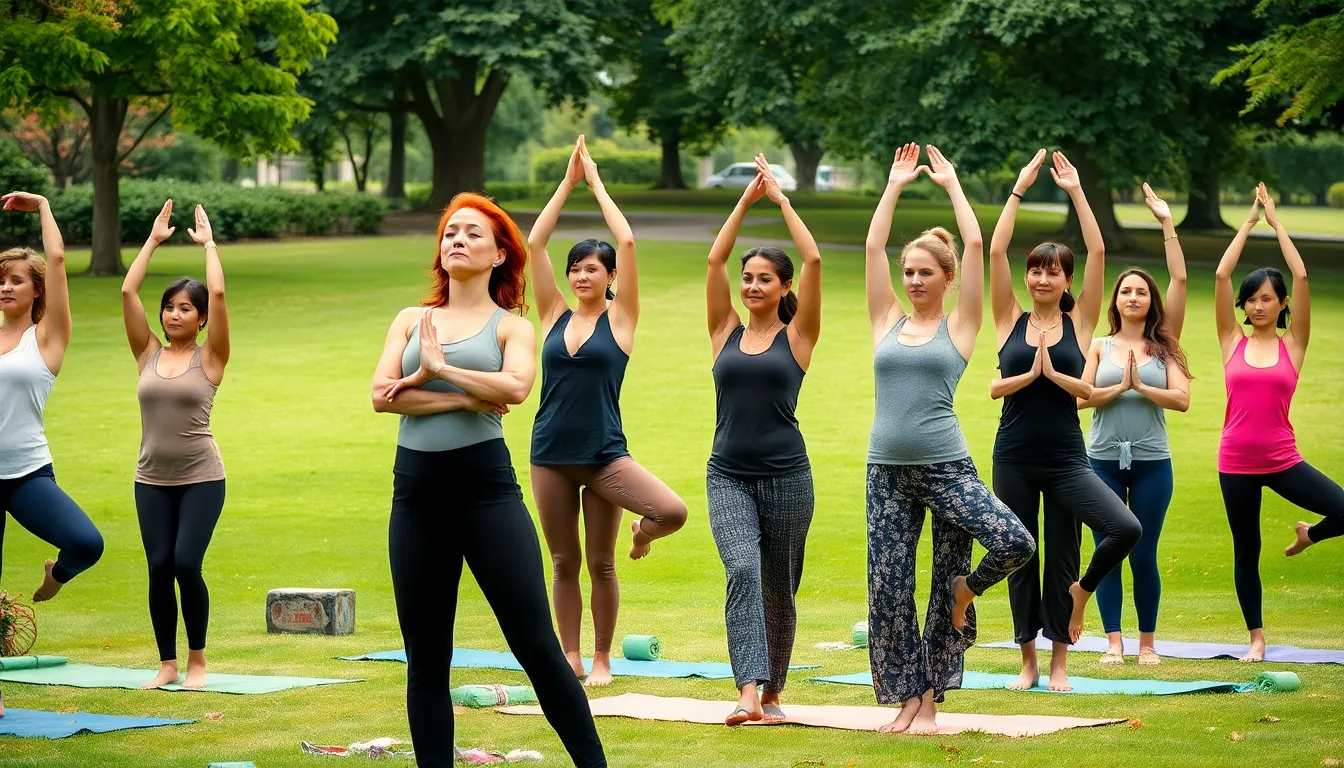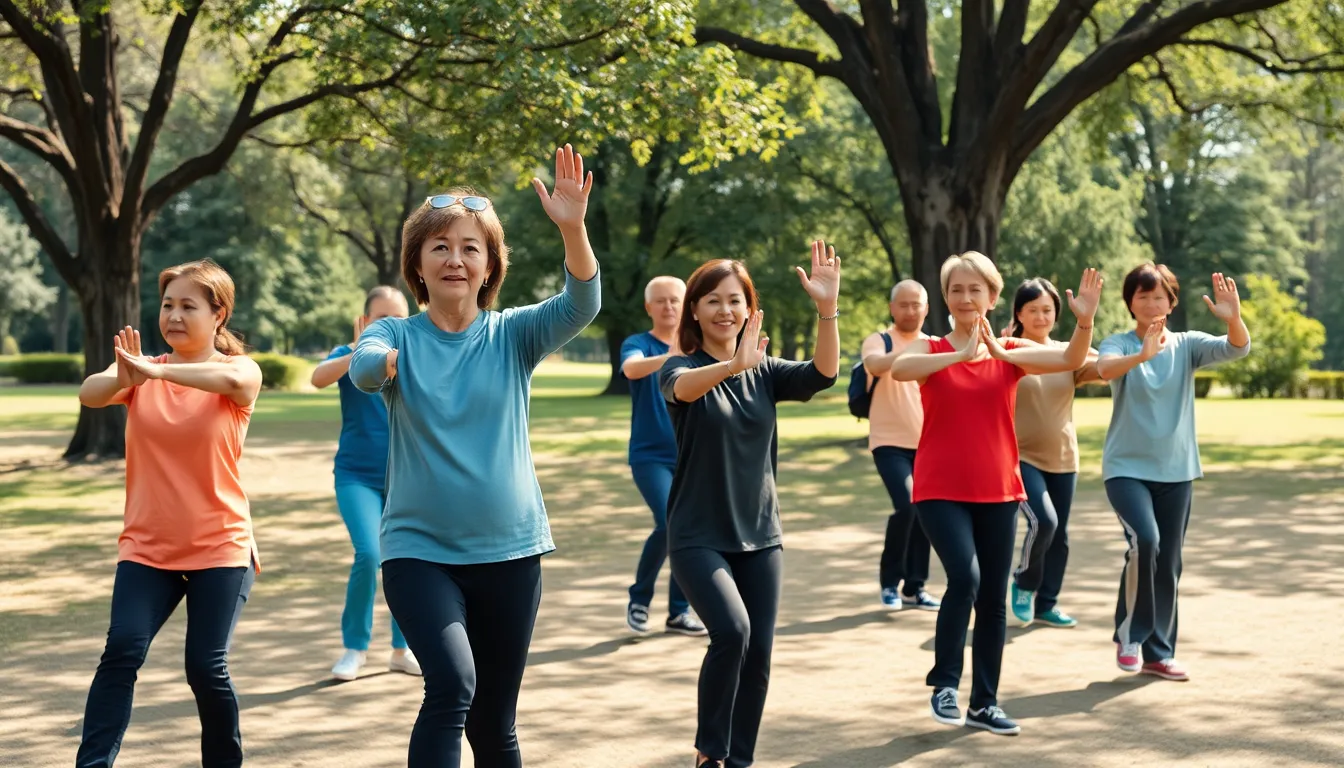In today’s fast-paced world, finding a moment to breathe can feel like searching for a unicorn in a haystack. Enter mindful movement exercises—your ticket to tranquility without the need for a yoga mat or a PhD in meditation. These exercises blend gentle movement with focused awareness, making it easier to shake off stress and embrace the present moment.
Table of Contents
ToggleWhat Are Mindful Movement Exercises?
Mindful movement exercises involve intentional physical activities that promote awareness of body and mind. These exercises typically combine slow, deliberate movements with a focus on breathing and present-moment awareness. Practitioners often engage in simple actions such as stretching, walking, or yoga, emphasizing the connection between mind and body.
Gentle movements characterize these exercises, allowing individuals to enhance their physical and mental well-being. Individuals can easily integrate mindful movements into daily life, requiring no specialized equipment. Popular forms of mindful movement include Tai Chi, Qigong, and restorative yoga. Each practice encourages an increased sense of relaxation and presence.
Awareness plays a crucial role in mindful movement. Participants concentrate on their bodily sensations, breathing patterns, and the rhythm of their movements. This heightened awareness often helps reduce stress and anxiety levels. Research indicates that regular practice improves mindfulness and promotes overall physical health.
Individuals frequently notice benefits including enhanced focus, reduced tension, and improved emotional regulation. Flexibility and strength often increase through the consistent practice of these exercises. Teachers or instructors usually guide participants, ensuring they maintain safe and effective techniques.
Learning about mindful movement can open pathways to new experiences and insights. These exercises offer an accessible route toward mindfulness without the need for complex routines. Engaging with mindful movement can foster a deeper connection with oneself and others, making it a valuable addition to any wellness regimen.
Benefits of Mindful Movement Exercises


Mindful movement exercises offer numerous advantages, enhancing both physical and mental well-being.
Physical Benefits
Improved flexibility and strength often result from engaging in mindful movement exercises. Exercises like stretching and restorative yoga promote enhanced range of motion. Tai Chi and Qigong contribute to balance and coordination. These practices also support muscle tone and overall body awareness. Participants frequently notice improvements in posture and alignment. Better circulation occurs as deliberate movements encourage blood flow. Regular practice reduces the risk of injury, making it easier to perform daily activities.
Mental Benefits
Mindful movement exercises significantly lower stress and anxiety levels. Focusing on bodily sensations fosters present-moment awareness and promotes relaxation. Enhanced concentration improves cognitive functions, including memory and focus. Practicing these exercises cultivates emotional resilience, helping individuals manage challenges more effectively. Social connection strengthens as participants often practice in group settings. Overall, consistent practice leads to a greater sense of calm and inner peace. Mindful movement exercises serve as valuable tools for nurturing mental health and emotional balance.
Types of Mindful Movement Exercises
Mindful movement exercises encompass a variety of practices aimed at enhancing physical and mental well-being. Each type offers unique benefits, promoting awareness and presence through movement.
Yoga
Yoga combines physical poses, breath control, and meditation. Practitioners focus on alignment and balance, embracing each posture with mindful awareness. Various styles like Hatha and Vinyasa cater to individual preferences. Regular practice can improve flexibility, strength, and posture while fostering a sense of calm. Research indicates that participants often experience reduced anxiety and enhanced emotional stability from engaging in yoga sessions. Group classes additionally build a sense of community, creating further psychological benefits.
Tai Chi
Tai Chi is often described as “meditation in motion.” This low-impact exercise involves slow, flowing movements that promote relaxation and coordination. Practitioners connect breath with deliberate motion, enhancing body awareness. Regular participation in Tai Chi can improve balance, flexibility, and mental clarity. Studies show that Tai Chi effectively reduces stress and anxiety levels, contributing to better overall health. Many engage in Tai Chi within group settings, allowing for shared experience and a sense of belonging.
Qigong
Qigong blends gentle movement, breath control, and focused intention. This practice emphasizes energy flow within the body, promoting holistic wellness. Various Qigong forms target different health benefits, such as relaxation or enhanced vitality. Practicing Qigong regularly can lead to improved physical flexibility and mental focus. Research suggests that Qigong reduces stress and promotes emotional balance. Participants often enjoy the meditative quality of Qigong, making it accessible for all ages and fitness levels.
How to Get Started with Mindful Movement Exercises
Starting mindful movement exercises involves goal-setting and establishing a routine tailored to individual preferences.
Setting Goals
Identifying specific goals enhances the effectiveness of mindful movement practices. Individuals may aim to improve flexibility, decrease stress, or enhance focus. Setting measurable objectives provides direction and motivation. For example, a person might target practicing for 30 minutes three times a week. Tracking progress helps maintain commitment and can lead to deeper engagement with each session. Goals should remain realistic and adaptable to encourage ongoing motivation.
Creating a Routine
Establishing a consistent routine supports the integration of mindful movement into daily life. Scheduling sessions at specific times each week fosters habit formation. Individuals may find morning practice energizing or evening sessions calming. Choosing a comfortable space enhances the experience, whether indoors or outdoors. Incorporating variety within the routine—such as alternating between yoga, Tai Chi, and walking—keeps the practice fresh. Regularly revisiting goals can also adapt the routine, aligning it with evolving needs and interests.





